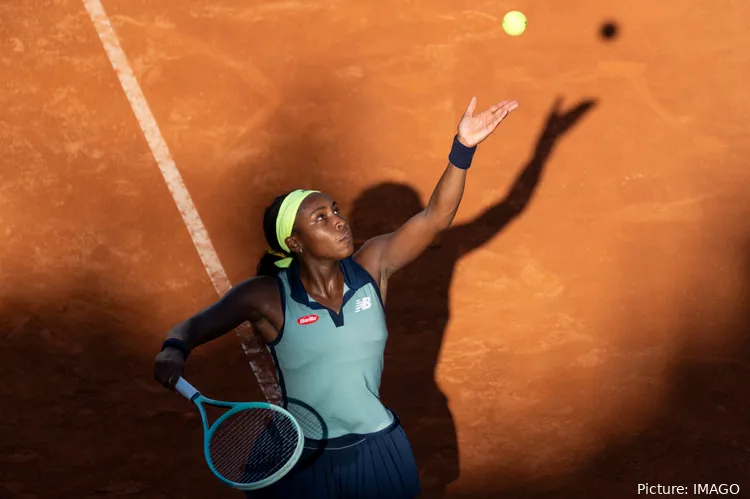
As the tennis world turns its gaze toward the 2025 season, Coco Gauff, the dynamic American star and reigning US Open champion, finds herself under a microscope—not just for her electrifying play but for a lingering question mark over her serve. Rennae Stubbs, a former doubles world No. 1 turned sharp-eyed coach and commentator, has sounded an alarm that’s reverberating through the sport. Stubbs, who knows a thing or two about the grind of professional tennis, believes Gauff’s serve is plagued by shaky fundamentals that could haunt her career if left unaddressed. “It just doesn’t go away,” Stubbs warned, her words carrying the weight of experience and a stark prediction for the 21-year-old phenom.
Gauff’s rise has been nothing short of meteoric. At 15, she stunned Venus Williams at Wimbledon, signaling her arrival as a prodigy with boundless potential. By 2023, she’d claimed her first Grand Slam title at Flushing Meadows, cementing her status as a top-tier talent with seven career singles titles and a career-high ranking of No. 2. Her game—built on explosive athleticism, a ferocious backhand, and an uncanny ability to chase down every ball—has drawn comparisons to the sport’s legends. Yet, beneath the brilliance lies a vulnerability: her serve. Stubbs, who briefly coached Serena Williams and has seen the game’s evolution up close, pinpointed this flaw during a recent analysis. “Her toss is too far out in front,” she observed, dissecting the mechanics with surgical precision. “She’s arching her back too much—it’s too upright.”
This isn’t a new critique. Gauff’s serve has long been a double-edged sword—capable of delivering aces but prone to inconsistency. In 2024, she led the WTA Tour with 431 double faults, a staggering stat for a player of her caliber. Her second-serve struggles were glaring at the WTA Finals in Riyadh, where she coughed up 11 double faults in a straight-sets loss to Barbora Krejcikova. Stubbs didn’t mince words: “When you don’t have great fundamentals on the serve, it’s going to show up when you’re nervous.” For Gauff, those nerves have surfaced at critical moments, undermining her otherwise dominant game. The Riyadh defeat was a microcosm of a broader issue—despite a strong season that included titles in Beijing and Wuhan, her serve remains a liability that opponents exploit.
Stubbs’ critique goes deeper than mere numbers. She argues that Gauff’s technique, flawed from her junior days, has been masked by her youth and athletic gifts but won’t hold up as the competition stiffens. “She’s gotten away with it because she’s so talented,” Stubbs noted, “but she’s not 15 anymore.” At 21, Gauff is at a crossroads—still young enough to retool her game, yet old enough that habits are hardening. The serve, tennis’s most isolated and mental shot, demands precision under pressure, and Stubbs fears Gauff’s current form lacks the foundation to deliver consistently. “You can’t hide it—it’s going to keep rearing its ugly head,” she cautioned, painting a picture of a ticking time bomb.
Gauff, for her part, isn’t blind to the problem. After splitting with coach Brad Gilbert in September 2024 following a disappointing US Open title defense, she reunited with Jean-Christophe Faurel and added Matt Daly to her team. The move paid dividends—she won two WTA 1000 titles in China late in the year—but the serve remained a work in progress. “I’m trying to improve it every day,” Gauff has said, her determination evident. Yet, Stubbs remains skeptical, suggesting that incremental tweaks won’t cut it. “You’ve got to rip it apart and start over,” she insisted, advocating a radical overhaul akin to what Maria Sharapova once undertook with her shoulder-driven serve.
The stakes are high. Gauff’s peers—Iga Swiatek, Aryna Sabalenka, and Elena Rybakina—are sharpening their arsenals, and a faltering serve could widen the gap in Grand Slam battles. Stubbs believes Gauff has the tools to dominate for years, but only if she confronts this flaw head-on. “She’s too good not to fix it,” Stubbs conceded, a flicker of optimism amid her critique. As Gauff prepares for the Australian Open in January 2025, the tennis world watches: will she silence the doubters, or will Stubbs’ prophecy—that poor fundamentals “just don’t go away”—prove all too true?
Leave a Reply